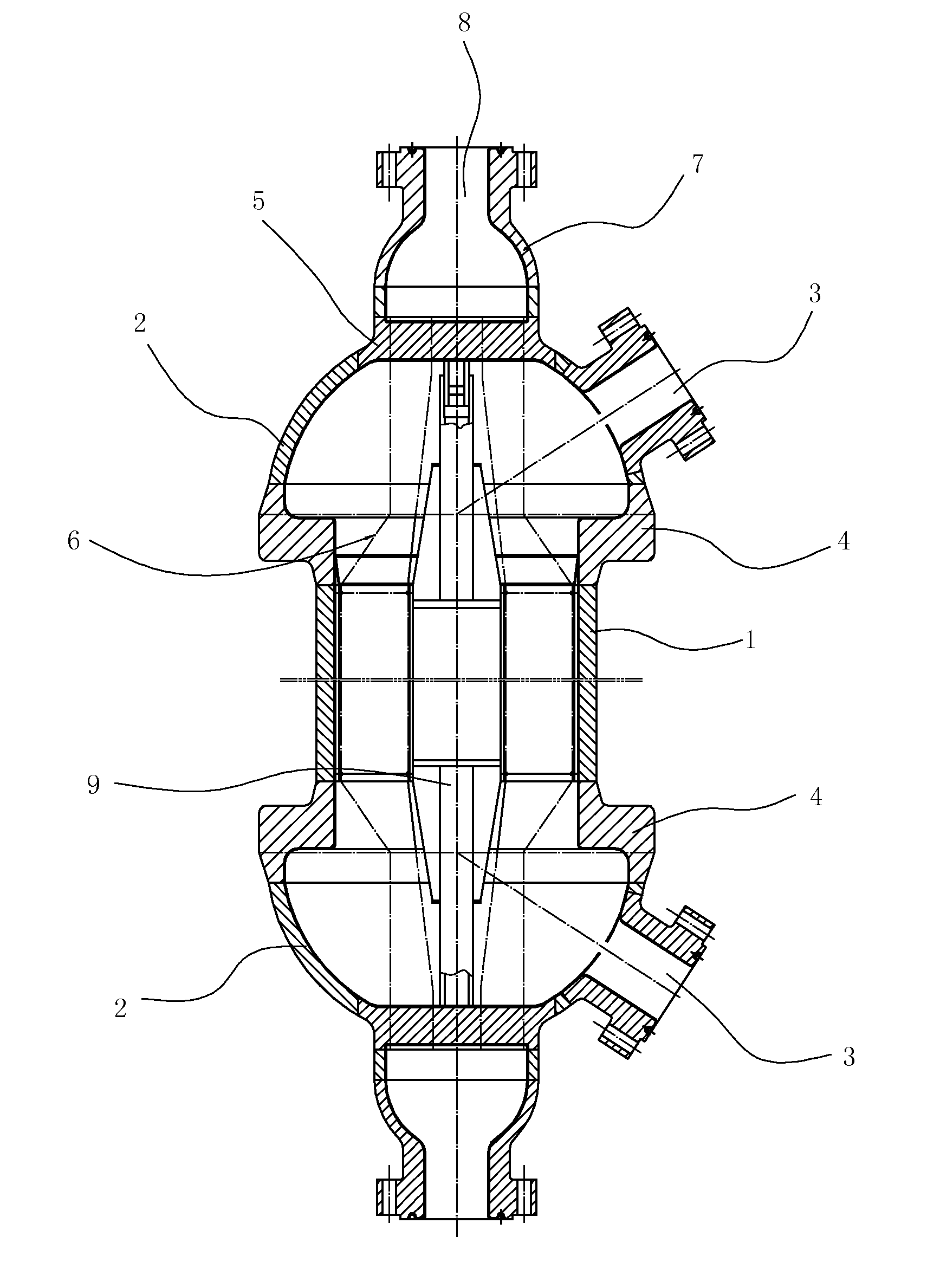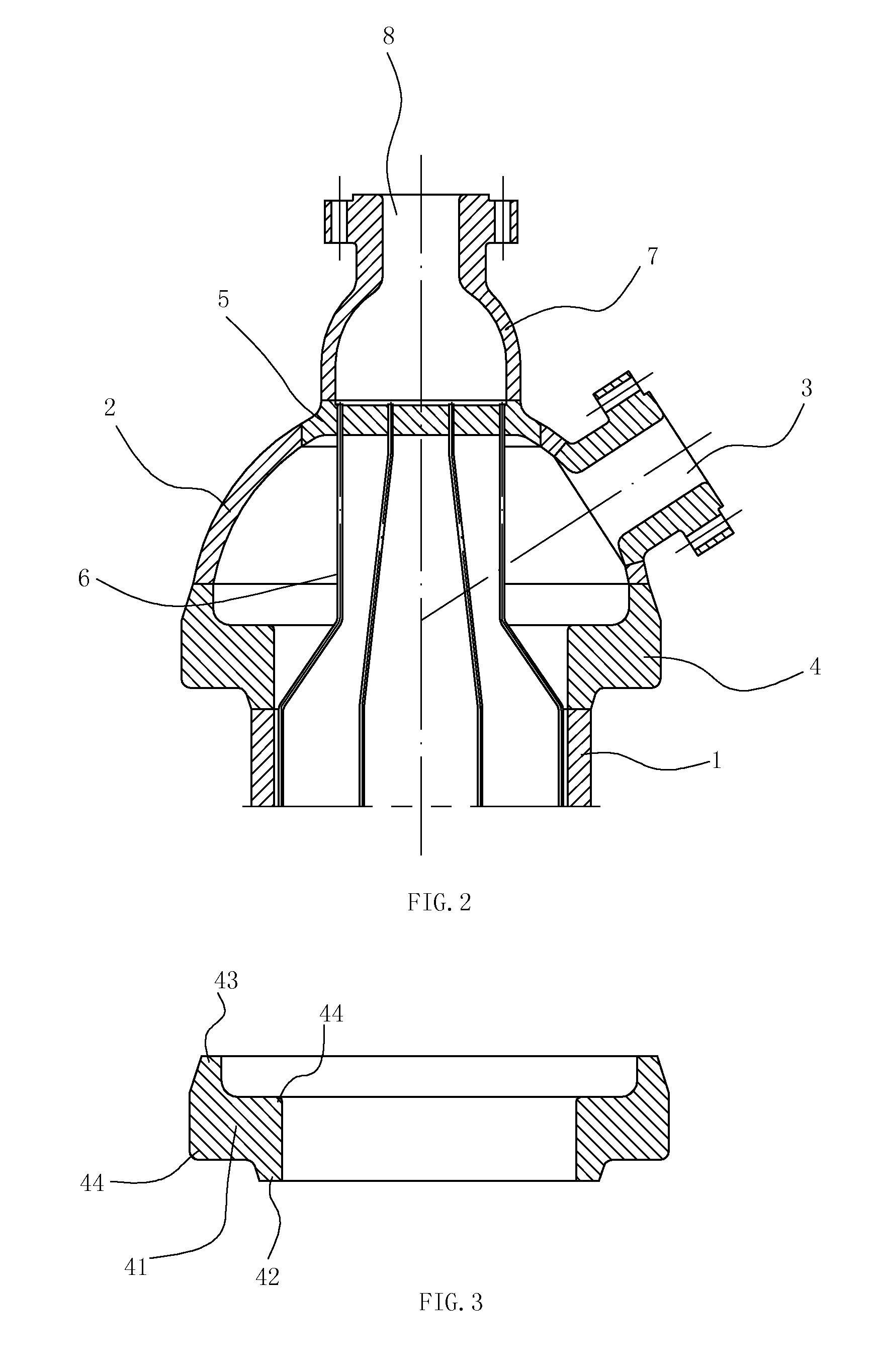Heat Exchanger
a technology of heat exchanger and heat exchange medium, which is applied in the direction of indirect heat exchanger, stationary tubular conduit assembly, light and heating apparatus, etc., can solve the problems of increased pressure drop, non-uniform heat exchange, and reduced heat exchange efficiency of heat exchanger, so as to achieve convenient operation, avoid dead heat exchange area, and improve heat exchange
- Summary
- Abstract
- Description
- Claims
- Application Information
AI Technical Summary
Benefits of technology
Problems solved by technology
Method used
Image
Examples
embodiment 1
[0019]As shown in FIGS. 1-3, a heat exchanger comprise a casing, a core 6 with two ends disposed inside the casing, each end of the core 6 supported by a tube plate 5 on each convex head, a central cylinder 9 disposed in the center of the core, and two heat transfer medium passages 3 formed on the casing; the casing has a cylinder 1 and two convex heads 2, and the tube plates, the core and the central cylinder 9 are all of conventional configurations; the main improvement is to provide two connectors 4, each connector having two openings with different diameters.
[0020]In this embodiment, each connector 4 comprises an annular body 41 with an internal circular edge having a first thickness and an external circular edge having a second thickness, each connector has a large opening 43 and a small opening 42, the internal circular edge and the external circular edge of each annular body 41 surround the small opening 42 and the large opening 43 respectively; each convex head is connected ...
embodiment 2
[0024]As shown in FIG. 4, the Embodiment 2 differs from the aforementioned Embodiment 1 in that each connector 4 comprises an annular body with an internal circular edge and an external circular edge, the internal circular edge and the external circular edge of each annular body surround the small opening and the large opening respectively, and smooth transition surface A is respectively formed on the internal circular edge and the external circular edge of each annular body. Such a configuration is applicable to the working condition of low pressure, thereby meeting the requirements of different working conditions.
embodiment 3
[0025]As shown in FIG. 5, the Embodiment 3 differs from the aforementioned Embodiment 1 in that each connector 4 comprises a tubular body B having a third thickness connected to a spherical body C having a fourth thickness, and a joint between the tubular body and the spherical body has a thickness greater than the third thicknesses and the fourth thickness of each connector 4. Such a structure is applicable, as used in a heat exchanger with a smaller-diameter cylinder, to the working condition of higher pressure.
[0026]In order to avoid forming a dead area on the bottom of the spherical body, the spherical body further comprises an auxiliary platform 10 surrounding the core. Meanwhile, the auxiliary platform brings convenience to the operations of the construction personnel and test personnel.
PUM
 Login to View More
Login to View More Abstract
Description
Claims
Application Information
 Login to View More
Login to View More - R&D
- Intellectual Property
- Life Sciences
- Materials
- Tech Scout
- Unparalleled Data Quality
- Higher Quality Content
- 60% Fewer Hallucinations
Browse by: Latest US Patents, China's latest patents, Technical Efficacy Thesaurus, Application Domain, Technology Topic, Popular Technical Reports.
© 2025 PatSnap. All rights reserved.Legal|Privacy policy|Modern Slavery Act Transparency Statement|Sitemap|About US| Contact US: help@patsnap.com



